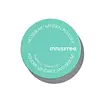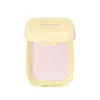What's inside
What's inside
 Key Ingredients
Key Ingredients

 Benefits
Benefits

 Concerns
Concerns

 Ingredients Side-by-side
Ingredients Side-by-side

Talc
AbrasiveMethyl Methacrylate Crosspolymer
Silica
AbrasiveMagnesium Dna
Skin ConditioningPotassium PCA
HumectantSilicon
AbrasiveSodium Fluoride
Potassium Hydroxide
BufferingTin Oxide
AbrasiveDimethicone
EmollientCaprylic/Capric Triglyceride
MaskingTitanium Dioxide
Cosmetic ColorantNylon-12
Diisostearyl Malate
EmollientMagnesium Myristate
Hexyl Laurate
EmollientDimethiconol Stearate
EmollientAluminum Myristate
Emulsion StabilisingGlyceryl Caprylate
EmollientHydrogen Dimethicone
CI 15850
Cosmetic ColorantCI 19140
Cosmetic ColorantTalc, Methyl Methacrylate Crosspolymer, Silica, Magnesium Dna, Potassium PCA, Silicon, Sodium Fluoride, Potassium Hydroxide, Tin Oxide, Dimethicone, Caprylic/Capric Triglyceride, Titanium Dioxide, Nylon-12, Diisostearyl Malate, Magnesium Myristate, Hexyl Laurate, Dimethiconol Stearate, Aluminum Myristate, Glyceryl Caprylate, Hydrogen Dimethicone, CI 15850, CI 19140
 Reviews
Reviews

Ingredients Explained
These ingredients are found in both products.
Ingredients higher up in an ingredient list are typically present in a larger amount.
This ingredient is an emollient, solvent, and texture enhancer. It is considered a skin-softener by helping the skin prevent moisture loss.
It helps thicken a product's formula and makes it easier to spread by dissolving clumping compounds.
Caprylic Triglyceride is made by combining glycerin with coconut oil, forming a clear liquid.
While there is an assumption Caprylic Triglyceride can clog pores due to it being derived from coconut oil, there is no research supporting this.
Learn more about Caprylic/Capric TriglycerideDimethicone is a type of synthetic silicone created from natural materials such as quartz.
What it does:
Dimethicone comes in different viscosities:
Depending on the viscosity, dimethicone has different properties.
Ingredients lists don't always show which type is used, so we recommend reaching out to the brand if you have questions about the viscosity.
This ingredient is unlikely to cause irritation because it does not get absorbed into skin. However, people with silicone allergies should be careful about using this ingredient.
Note: Dimethicone may contribute to pilling. This is because it is not oil or water soluble, so pilling may occur when layered with products. When mixed with heavy oils in a formula, the outcome is also quite greasy.
Learn more about DimethiconeGlyceryl Caprylate comes from glycerin and caprylic acid, a fatty acid from coconut. It has emollient and emulsifier properties.
As an emollient, it helps hydrate your skin. Emollients work by creating a barrier on your skin to trap moisture in, helping to keep your skin soft and smooth.
On the other hand, emulsifiers prevent ingredients (such as oil and water) from separating.
Learn more about Glyceryl CaprylateSilica, also known as silicon dioxide, is a naturally occurring mineral. It is used as a fine, spherical, and porous powder in cosmetics.
Though it has exfoliant properties, the function of silica varies depending on the product.
The unique structure of silica enhances the spreadability and adds smoothness, making it a great texture enhancer.
It is also used as an active carrier, emulsifier, and mattifier due to its ability to absorb excess oil.
In some products, tiny microneedles called spicules are made from silica or hydrolyzed sponge. When you rub them in, they lightly polish away dead skin layers and enhance the penetration of active ingredients.
Learn more about Silica